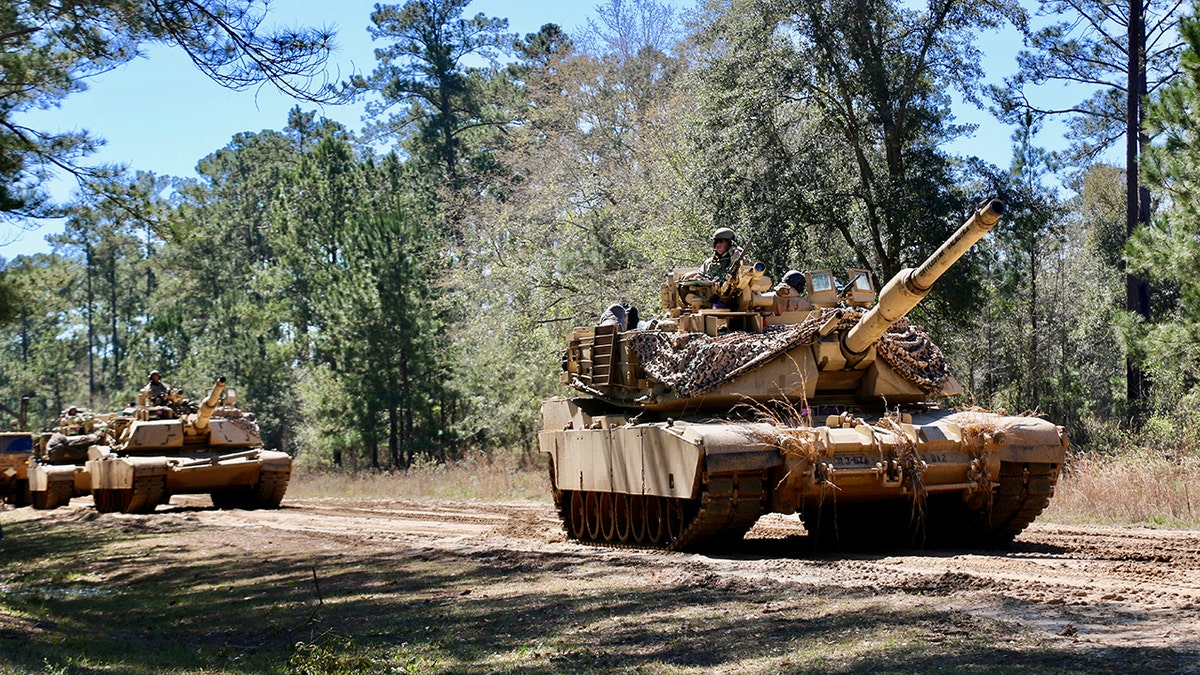Fox News Flash top headlines for July 31
Fox News Flash top headlines are here. Check out what's clicking on Foxnews.com.
Racing over bridges, supporting advancing infantry with suppressive fire, shooting vehicle-launched counter-drone missiles and engaging enemy tanks from safe standoff ranges are all operations the Army anticipates for its new fleet of armored combat vehicles.
A decided emphasis for the Army’s family of Next Generation Combat Vehicles is speed, maneuverability and expeditionary warfare, all key components of the service’s effort to bring supportive fires to advancing infantry, cross bridges, engage in mechanized maneuver warfare and leverage a new generation of sensor technology and drone coordination.
The NGCV effort consists of an interesting mixture of new platforms, to include the fast-emerging Optionally Manned Fighting Vehicle infantry carrier, Robotic Combat Vehicle and some kind of future tank-like platform.
Part of the strategy for engineering lighter-weight vehicles resides in a specific effort to use new sensor systems, active protection and speed itself as survivability-enhancing mechanisms. The concept is to see and elude or thwart incoming enemy fire before being hit. In effect, see and destroy enemies before you yourself are hit.
SOLDIERS USE AI TO FIRE PRECISION GRENADES, GUIDE DRONE ATTACKS
The strategy is to use long-range AI-enabled targeting sensors and thermal sights, air and ground drone connectivity, Short-Range Air Defense and active protection systems … instead of very heavy armor… to engage in massive mechanized force-on-force warfare.

File photo - M1A1 Abrams main battle tanks assigned to 3rd Battalion, 67th Armored Regiment, 2nd Armored Brigade Combat Team, 3rd Infantry Division stage prior to a tactical movement during Spartan Focus, at Fort Stewart, Ga. (U.S. Army photo by Spc. Andres Chandler/released)
However, the Army plans for a new fleet of armored combat vehicles as of yet, do not involve efforts to build anything heavier than 30-to-50 tons maximum. An Abrams tank is 70-tons.
The Abrams brings unparalleled survivability but lacks speed to keep up with advancing infantry and lighter-weight vehicles and suffers distinct mobility problems. Abrams tanks simply cannot get to a lot of places as they are too heavy for many bridges and other weight, speed and mobility sensitive combat conditions.
Given all this, when it comes to survivability in terms of being prepared to “take a hit” if necessary, will the Army’s new fleet of future vehicles truly be prepared? Certainly, boxers train to keep fighting when they take punches, knowing that will likely happen.
ARMY SOLDIERS USE 'MACBOOK'-SIZED TABLET TO OPERATE MULTIPLE SMALL DRONES
Much of the Army’s long-range future strategy hinges upon the emergence of lightweight armor composites, most of which may not yet be ready to offer protection that is superior to heavy armor. Army weapons developers have said that some kind of “breakthrough” survivability technology may be needed before the service can truly engineer a next-gen “tank.”
If lightweight armor strong enough to hold off tank rounds and certain kinds of Anti-Tank Guided Missiles is not yet here, future armored Army vehicles will need to rely upon sensors, active protection and maneuverability to survive. Is that enough?
Could the Army’s new fleet encounter some of the same limitations thought to have imperiled the future of Future Combat Systems? Years ago it was determined that FCS’ new fleet of eight 27-ton Manned Ground Vehicles simply were not survivable enough for heavy mechanized, major power war.
The technical and developmental premise of FCS was to rely upon a sensor-driven “survivability onion” able to see and destroy threats without having to sustain a direct hit. Such a strategy, which may now inform the Army’s NGCV approach, may be based on what could be flawed or imperfect reasoning.
ARMY TO TEST AND SHOOT WEAPONS AT NEW MOBILE PROTECTED FIREPOWER PROTOTYPES
Would you feel prepared for a fight if you based your entire approach upon the expectation that you will not have to take a hit? What if sensors are jammed or malfunction? What if certain kinds of enemy munitions are able to penetrate the “survivability onion?”
Should an armored combat vehicle, ready to engage in major power mechanized warfare, be engineered such that it has the best chance of surviving and continuing to fight in the event that it is hit by a tank round? RPG? ATGM (Anti-Tank Guided Missile)?
Certainly, Army weapons developers, strategists and technology experts have learned lessons from FCS, which is why the service aims to connect the best of both worlds with its new fleet of NGCVs.
This means that the seemingly impossible may be possible … perhaps the Army can build future armored combat vehicles that are both more maneuverable and deployable while, at the same time, bringing new levels of unprecedented survivability to armored warfare? It just might be possible, if seemingly paradoxical.
One such strategic effort to circumvent this predicament might be found with robotics and manned-unmanned teaming. If unmanned vehicles were operated by humans at safer stand-off ranges, they could absorb incoming enemy fire, engage heavily armored vehicles and test enemy defenses, lessening the need for manned armored vehicles to enter into higher concentrations of enemy fire in closer proximity.
Long-range sensors, weapons and air-ground networking are all part of the Army’s multi-domain conceptual effort to prepare for future war and build lighter, faster, more expeditionary armored vehicles.
CLICK HERE TO GET THE FOX NEWS APP
Nonetheless, the bottom line may be this: Heavy armor has an irreplaceable valuable place in future war. It may be here to stay… at least for the immediate future.

